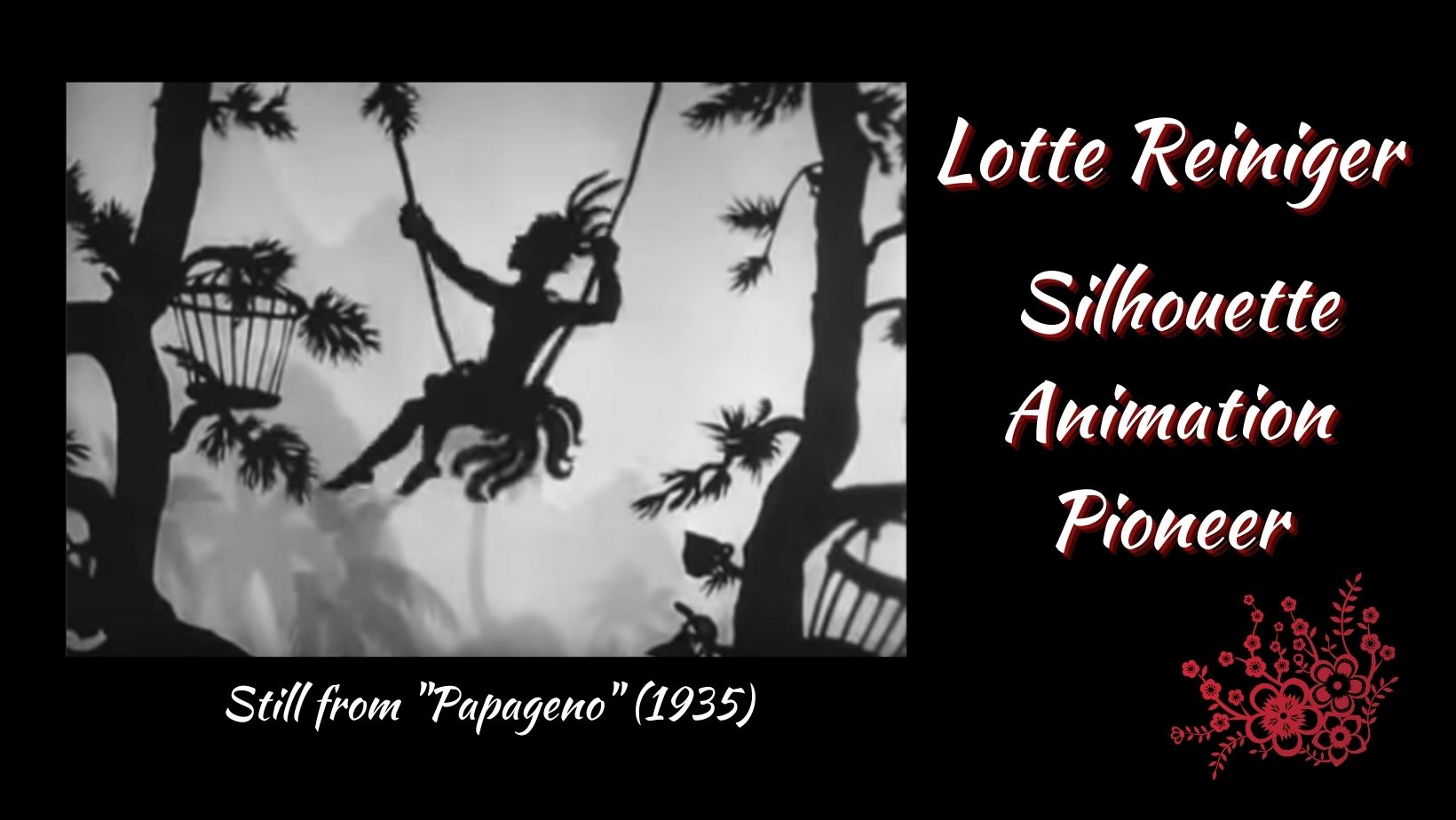Lotte Reiniger was the woman who made the first feature length animated movie in 1926 with the silhouette animation “The Adventures of Prince Achmed” (Die Abenteuer des Prinzen Achmed), even if Disney wants to claim the title.


Lotte (Charlotte) Reiniger was born on June 2nd, 1899 in Berlin to upper middle class parents. From an early age, Lotte Reiniger was fascinated with art, especially the Chinese silhouette puppet theater art. And she also loved movies, loved the special effects by French film pioneer Georges Méliès, and as a young adult had connections to directors and other artists in the field.
In 1919, she made her first animated movie “Das Ornament des verliebten Herzens” (The ornament of the heart in love), using the silhouette animation. She cut the figures from black paper and placed them on a glass plate which was illuminated from below. Then she took photos with the camera that she positioned above the table. For every movie second she needed 16 photos.
In 1923, Reiniger, her husband Carl Koch whom she married in 1921, Walter Ruttmann, and Berthold Bartosch began working on a longer movie: “The Adventures of Prince Achmed”. In 1926, the project was finished after taking 300,000 single photos. This is the movie Reiniger is probably most known for. At the time, she was highly influenced by expressionist movies while she later took a more romantic and Jugendstil (art nouveau) approach to her film aesthetics.

In the late 1920s and early 1930s, she made four movies: Dr. Doolittle and his animals (1928), Harlekin (1931), Carmen (1933), and Papageno (1935). During that time she worked with composers Kurt Weill, Paul Dessau, and Paul Hindemuth.
Reiniger and her husband left Germany in 1935 due to economic difficulties and the political situation after the rise of Hitler to power. Unfortunately, they couldn’t take all the original photo plates of her movies with them, so most of the material we see are copies of copies.
Reiniger and Koch stayed in London, Paris, and Rome before returning to Berlin in 1943 to take care of Reiniger’s sick mother.
From 1944 until 1947 Reiniger made the fairy tale movie “Die goldene Gans” and continued with the theme of fairy tales when she started working at the Berliner Schattenbühne (shadow theater) after the war. With her friend Elsbeth Schulz, she made three movies: Brüderchen und Schwesterchen (Little brother and little sister), Der gestiefelte Kater (Puss in boots), and Dornröschen (Sleeping Beauty).
In 1949, Reiniger and her husband moved to London again where she started making movies for the BBC. Again, she focused on fairy tales (Grimm, Andersen, Tausendundeine Nacht) and silhouette animation. For her short film “Das tapfere Schneiderlein” (The valiant little tailor) she won the “Silver Dolphin” (first prize) at the Biennale in Venice in 1954/55.
But Reiniger didn’t only make movies, she also illustrated a new edition of the King Arthur Legend.


In 1971, Reiniger focused on Mozart in her work, producing 140 paper cuttings or silhouettes with scenes and motifs from his operas.
For her work, she received the “Filmband in Gold” (Tape in gold) in 1972, and the Order of Merit in 1979. Reiniger died in 1981 in Dettenhausen where she is buried with her husband.
More about Lotte Reiniger
Please note that the links below are affiliate links and I will earn a small commission if you purchase through those links. There are no additional costs to you.


